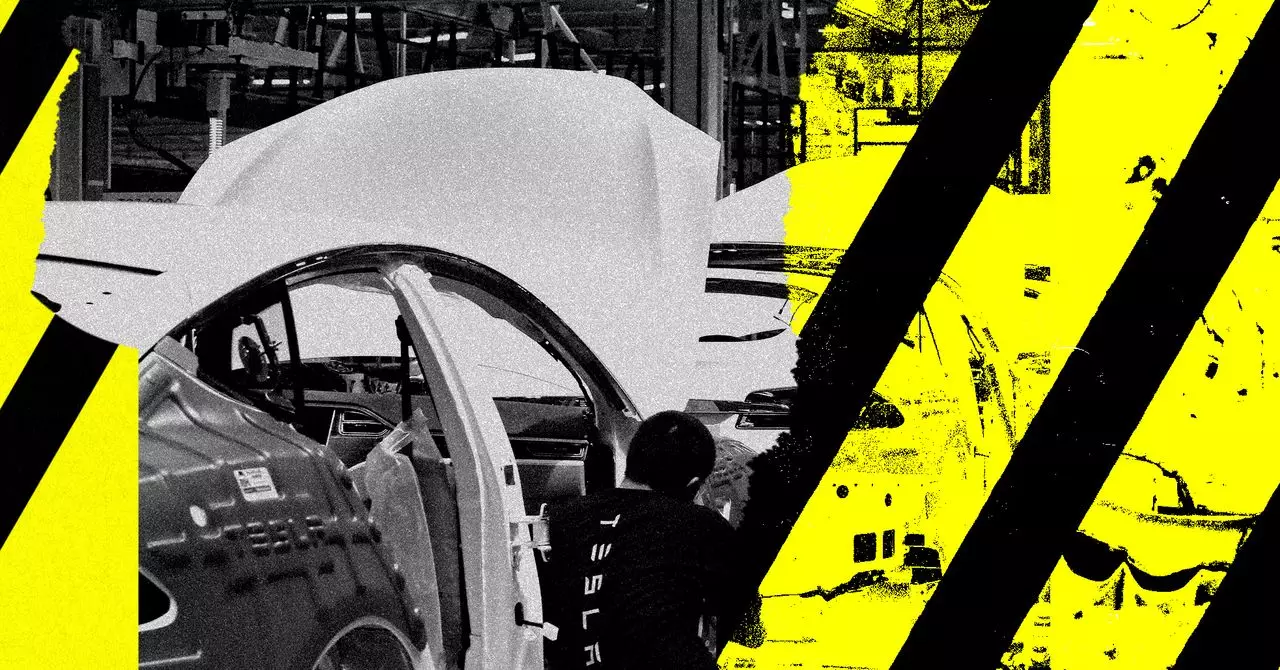In the pursuit of groundbreaking innovations, companies like Tesla, SpaceX, and The Boring Company have emerged as formidable players leading the charge into the future. However, as highlighted in a recent memo by the AFL-CIO, a shadow looms over these industry giants, revealing a troubling pattern of workplace safety issues that cannot be ignored. Since 2016, there have been numerous reported accidents, with the Occupational Safety and Health Administration (OSHA) launching investigations into many of these incidents. These issues raise alarming questions about the cost of rapid technological advancement when employee safety appears to be compromised.
The Human Cost of Technological Advancement
A particularly harrowing incident involved the tragic electrocution of Victor Joe Gomez Sr., a licensed electrician who met his untimely death while inspecting electrical panels at Tesla’s Gigafactory in Austin, Texas. The agony of such an event is compounded by the fact that it reportedly occurred because the equipment had not been properly disconnected. OSHA’s ongoing investigation into this case underscores a wider issue: companies seem to prioritize speed and efficiency over basic safety protocols. For employees, this translates into a workplace culture that is dangerously complacent regarding protocols essential for their protection.
In addition to fatalities, the documented occurrences of serious injuries further paint a grim picture. For instance, amputations due to machinery malfunctions at Tesla facilities reveal a worrying trend. When an organization receives OSHA citations for safety violations, it is not just a bureaucratic slap on the wrist; it is a signal that systemic issues exist within the safety culture of the company. It’s disheartening to contemplate how such organizations—poised at the vanguard of technology and innovation—can exhibit negligence toward their most vital asset: their employees.
A Culture of Resistance and Denial
The AFL-CIO has been vocal about allegations of inadequate safety measures at Tesla, stating that numerous employees have expressed concerns regarding a lack of prioritization on safety. Despite the gravity of these allegations, Tesla’s response has often involved disputing OSHA’s citations. Statistically, the data shows that a significant proportion of OSHA cases against Tesla remain open, as the company consistently opts to challenge the citations instead of taking immediate action to address the safety hazards pointed out by OSHA investigators. This attitude toward compliance suggests an alarming willingness to defer responsibility for the workplace environment.
It’s puzzling why large corporations would choose to engage in drawn-out battles against OSHA citations, especially in light of the relatively modest fines typically associated with such penalties. This behavior indicates a calculated decision that favors sustained litigation over jeopardizing operational efficiency—a worrisome dynamic that may create a false sense of invulnerability among industry leaders. The strategy of keeping cases open allows these companies to sidestep immediate reforms that could enhance workplace safety, hence perpetuating a hazardous environment for their employees.
The Political Backdrop and Industry Responsibility
Under the watchful eye of former leaders of OSHA, concerns have been raised regarding this culture of defiance toward safety regulations. David Michaels, a former assistant secretary for OSHA under Obama, articulates a critical view of such corporate behavior. He suggests that companies may prioritize profit over ethical obligations to their workforce, thereby creating an institutional mindset that sees safety violations as an inconvenience rather than a serious liability. The ethical implications of such a philosophy are disconcerting, as it posits that financial gains outweigh the welfare of human lives.
Moreover, the absence of transparency regarding whistleblowers amplifies this issue. While some may argue that anonymity encourages reporting safety violations, the existing safeguards need reinforcement to protect those who step forward, especially in high-profile tech companies. Although there is no evidence that Elon Musk or others in similar positions have accessed confidential databases that might endanger whistleblowers, the fact remains that the culture of secrecy can deter employees from voicing critical concerns for fear of reprisal, further entrenching a complacent attitude within these companies.
It is essential to advocate for a workplace culture that genuinely prioritizes safety and employee welfare. Advanced technologies promise unparalleled progress, yet the cost of such progress must not come at the expense of human lives or well-being. The path toward a safer working environment is not solely the responsibility of regulatory agencies; it also demands accountability and reform from within at the organizational level. Companies must recognize that their ultimate success is intertwined with the health and safety of their workforce.

